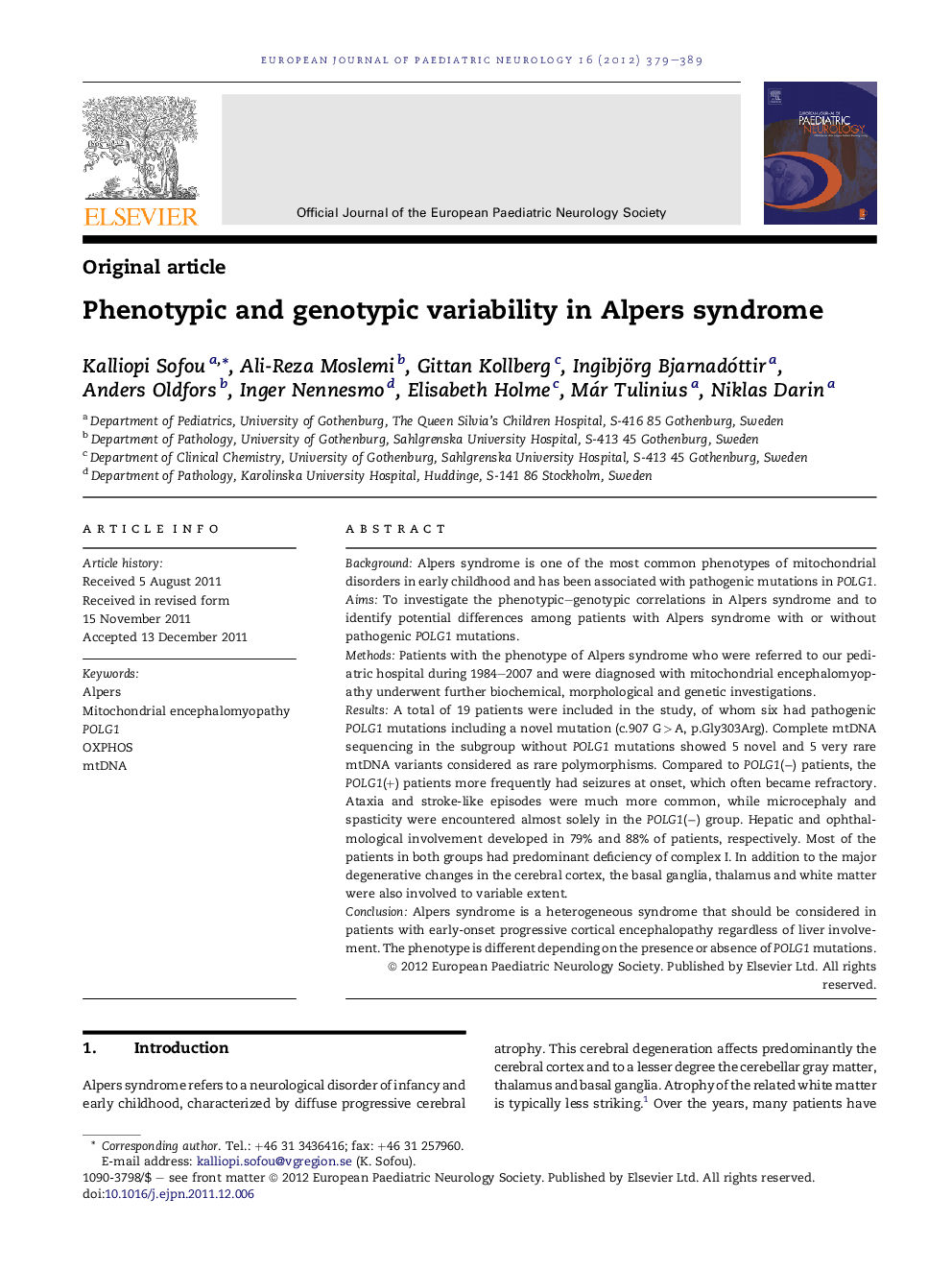| Article ID | Journal | Published Year | Pages | File Type |
|---|---|---|---|---|
| 3054222 | European Journal of Paediatric Neurology | 2012 | 11 Pages |
BackgroundAlpers syndrome is one of the most common phenotypes of mitochondrial disorders in early childhood and has been associated with pathogenic mutations in POLG1.AimsTo investigate the phenotypic–genotypic correlations in Alpers syndrome and to identify potential differences among patients with Alpers syndrome with or without pathogenic POLG1 mutations.MethodsPatients with the phenotype of Alpers syndrome who were referred to our pediatric hospital during 1984–2007 and were diagnosed with mitochondrial encephalomyopathy underwent further biochemical, morphological and genetic investigations.ResultsA total of 19 patients were included in the study, of whom six had pathogenic POLG1 mutations including a novel mutation (c.907 G > A, p.Gly303Arg). Complete mtDNA sequencing in the subgroup without POLG1 mutations showed 5 novel and 5 very rare mtDNA variants considered as rare polymorphisms. Compared to POLG1(−) patients, the POLG1(+) patients more frequently had seizures at onset, which often became refractory. Ataxia and stroke-like episodes were much more common, while microcephaly and spasticity were encountered almost solely in the POLG1(−) group. Hepatic and ophthalmological involvement developed in 79% and 88% of patients, respectively. Most of the patients in both groups had predominant deficiency of complex I. In addition to the major degenerative changes in the cerebral cortex, the basal ganglia, thalamus and white matter were also involved to variable extent.ConclusionAlpers syndrome is a heterogeneous syndrome that should be considered in patients with early-onset progressive cortical encephalopathy regardless of liver involvement. The phenotype is different depending on the presence or absence of POLG1 mutations.
